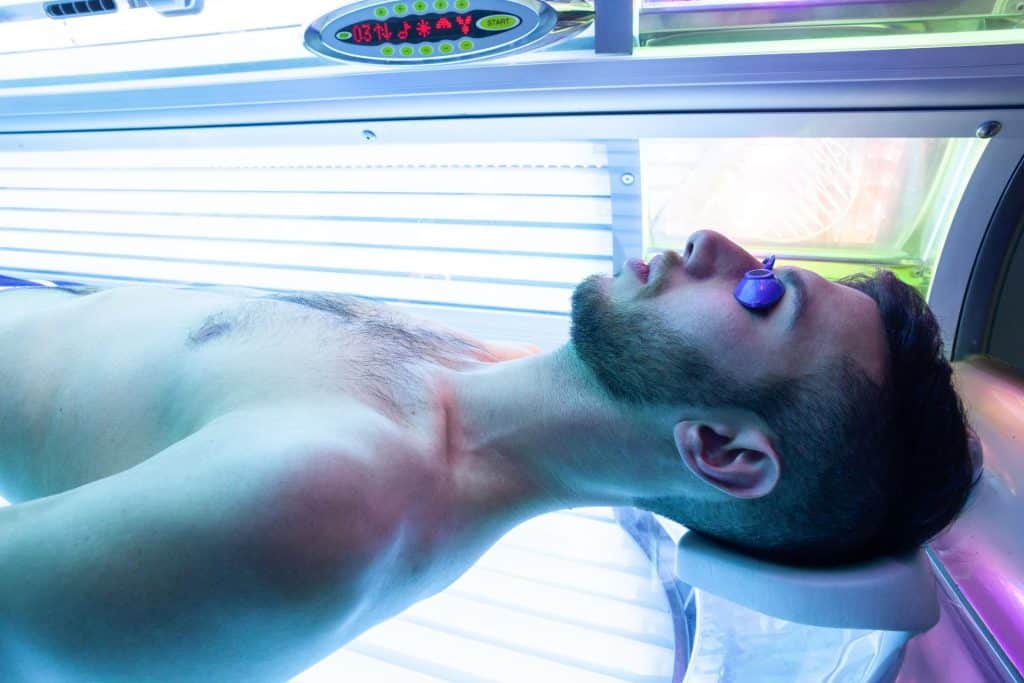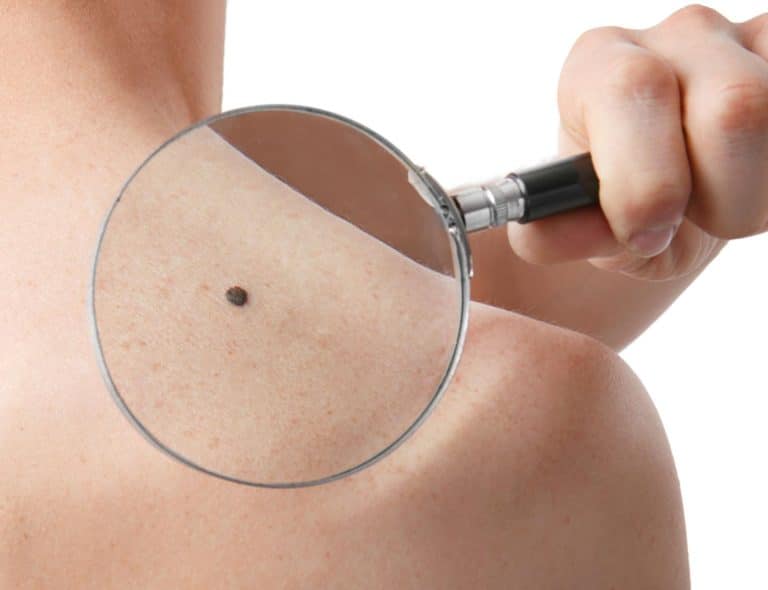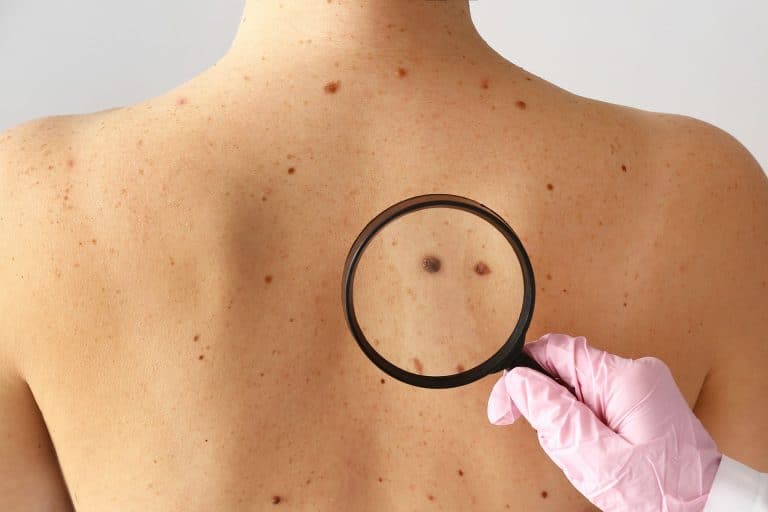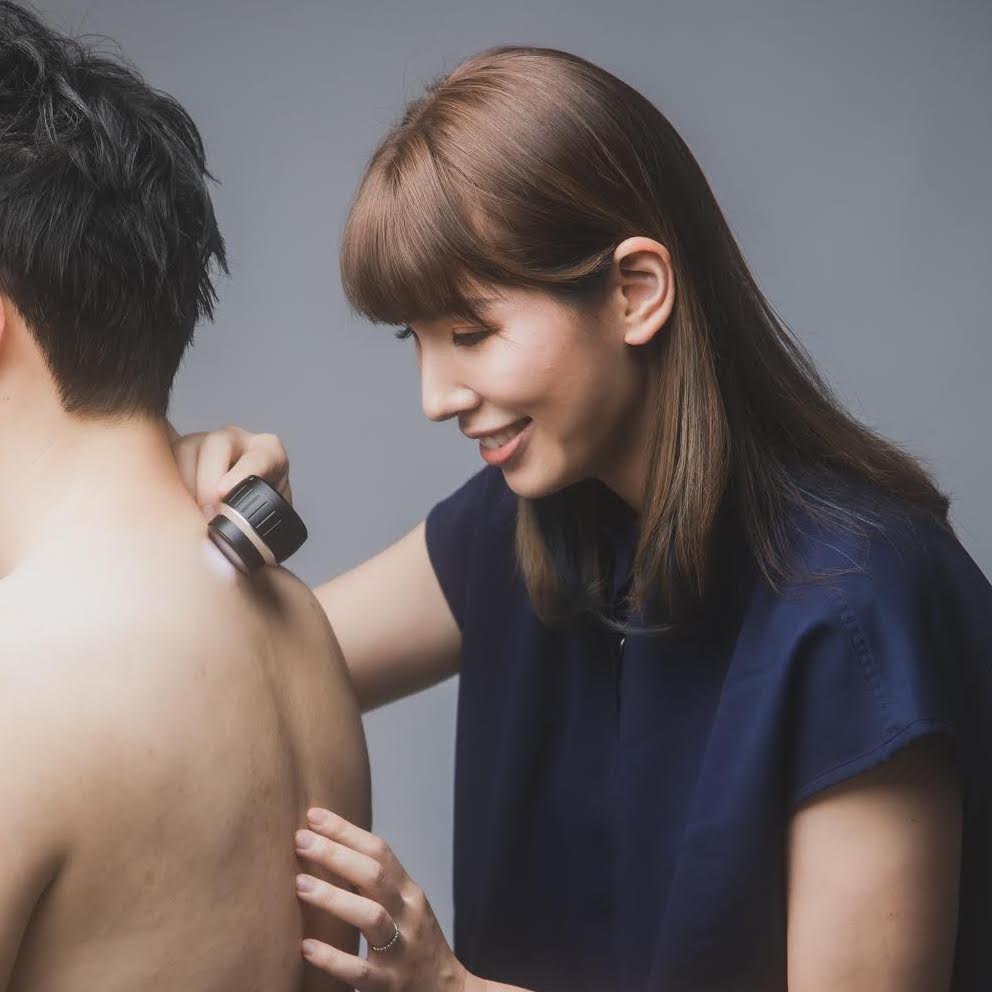Tanning, whether from natural sunlight or artificial sources like sunbeds, poses significant risks to skin health. While many people associate tanned skin with beauty and vitality, the reality is that tanning damages the skin’s DNA and significantly increases the risk of skin cancer.
Understanding the science of ultraviolet (UV) radiation, the long-term effects of tanning, and safer alternatives can help prevent irreversible skin damage and reduce the risk of melanoma, basal cell carcinoma (BCC), and squamous cell carcinoma (SCC).
Understanding the Science of UV Radiation and Skin Damage
1. What is UV Radiation?
Ultraviolet (UV) radiation is invisible energy emitted by the sun and artificial sources such as sunbeds. It is categorised into three types:
- UVA (320-400 nm) – Penetrates deep into the skin, damaging collagen and elastin, leading to premature ageing and DNA mutations.
- UVB (290-320 nm) – Affects the skin’s surface, causing sunburn, direct DNA damage, and skin cancer.
- UVC (100-290 nm) – Mostly absorbed by the atmosphere and does not reach the Earth’s surface.
2. How UV Exposure Leads to Skin Cancer
- Both UVA and UVB rays damage DNA in skin cells, triggering mutations that can lead to uncontrolled cell growth (cancer).
- Over time, cumulative sun exposure increases the risk of non-melanoma skin cancers (BCC and SCC), while intense, intermittent sun exposure (such as sunburns) increases the risk of melanoma.
Why Sunbeds Are Just as Dangerous as Sun Exposure
Many people mistakenly believe that sunbeds offer a safer way to tan but research shows that indoor tanning is even more dangerous than natural sun exposure.
1. Higher Concentrations of UVA and UVB
- Sunbeds emit concentrated doses of UVA and UVB radiation, often at much higher levels than natural sunlight.
- Studies show that a single sunbed session can increase melanoma risk by 20%.
2. Increased Risk of Skin Cancer
- Using sunbeds before the age of 35 increases melanoma risk by 59%.
- Sunbed users are 2.5 times more likely to develop SCC and 1.5 times more likely to develop BCC compared to non-users.
3. Are Sunbeds Legal in the UK and Worldwide?
- In the UK, sunbeds remain legal, although there are regulations to prevent under-18s from using them.
- Australia banned commercial sunbeds in 2015 due to strong evidence linking them to skin cancer.
- Brazil was the first country to ban sunbeds in 2009.
- Several European countries have restrictions, but sunbeds are still legal in many regions.
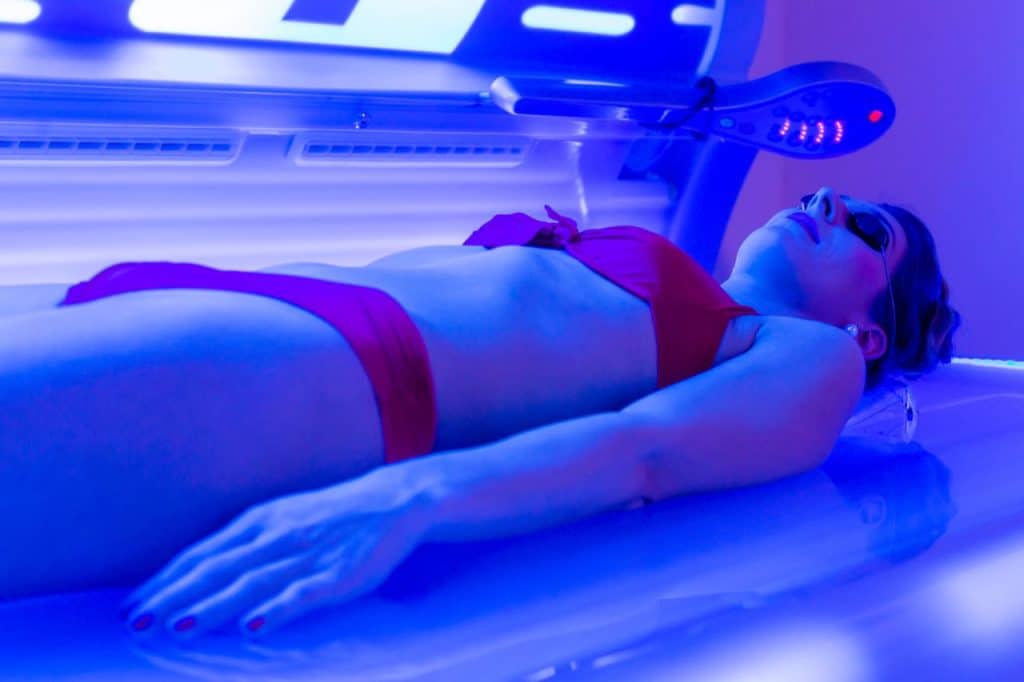
The Long-Term Effects of UV Damage on Skin Health
1. Premature Ageing (Photoageing)
- UV exposure accelerates wrinkles, sagging, and pigmentation due to collagen and elastin breakdown.
- People who use sunbeds or tan frequently develop deep wrinkles at a younger age.
2. Hyperpigmentation and Uneven Skin Tone
- Chronic sun exposure causes sunspots, melasma, and uneven pigmentation, especially in fair-skinned individuals.
3. Immune System Suppression
- UV exposure weakens the immune response, making it harder for the body to repair damaged DNA.
- This increases the likelihood of precancerous cells developing into full-blown cancer.
4. Increased Risk of Eye Damage
- Prolonged UV exposure contributes to cataracts, macular degeneration, and ocular melanoma.
- Many sunbed users fail to wear protective eyewear, further increasing eye cancer risk.
Safe Alternatives to Achieve a Sun-Kissed Glow
If you want a bronzed look without the risks of UV exposure, consider sunless tanning options:
1. Self-Tanning Lotions & Mousses
- Contain dihydroxyacetone (DHA), which reacts with the skin’s surface to create a natural-looking tan.
- No UV exposure required.
2. Spray Tans
- Professional application ensures even coverage and a longer-lasting tan.
- Safe when used correctly without inhaling the product.
3. Gradual Tanning Moisturisers
- Provide a subtle tan over time while moisturising the skin.
Important: Even with fake tan, you still need to wear SPF daily! Most tanning products do not contain sun protection.

Educating Young People on the Risks of Tanning
1. Raising Awareness About Skin Cancer
- Schools and universities should include skin cancer education in their health programmes.
- Social media campaigns should highlight real-life consequences of tanning, including before-and-after skin damage photos.
2. Promoting Body Positivity
- Encourage embracing natural skin tones rather than glorifying tanned skin as a beauty standard.
- Support influencers and celebrities who advocate safe sun habits.
3. Encouraging Sun Protection Habits Early
- Teach children and teenagers the importance of wearing sunscreen daily.
- Promote hats, sunglasses, and protective clothing as fashionable sun-safe choices.
Final Thoughts: Say No to Tanning, Say Yes to Skin Health
Tanning is not a sign of health, it’s a sign of DNA damage. Whether from the sun or sunbeds, UV radiation increases the risk of skin cancer and premature ageing.
Key Takeaways:
- There is no such thing as a safe tan – all UV exposure damages the skin.
- Sunbeds are just as dangerous as natural sun exposure.
- Using fake tan products is the safest way to achieve a bronzed look.
- Educating young people about the risks of tanning can help prevent future skin cancer cases.
📢 Protect your skin, protect your future. Book a skin cancer check today at ISO Skin Cancer Clinic! 🌞.

